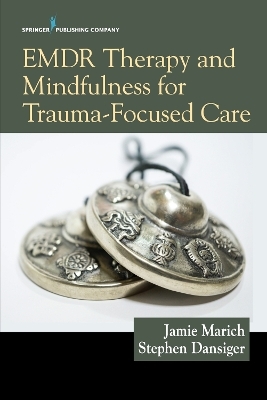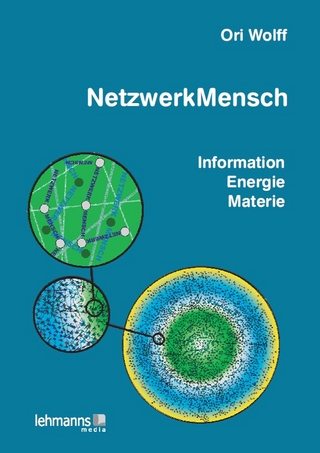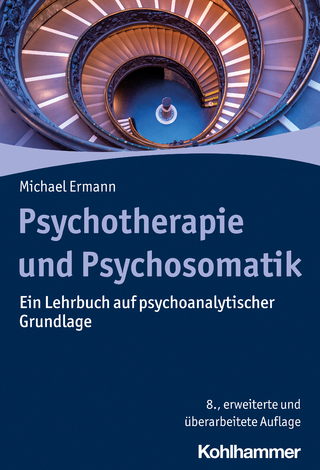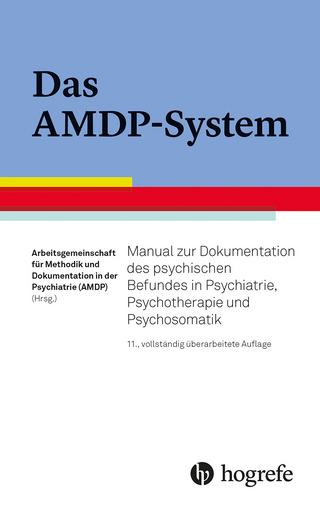
EMDR Therapy and Mindfulness for Trauma-Focused Care
Springer Publishing Co Inc (Verlag)
978-0-8261-4914-5 (ISBN)
Based on the belief that mindfulness is a critical component in the delivery of EMDR, this innovative text integrates mindfulness-informed practice with EMDR therapy to create an effective new approach for healing trauma. Based on current evidence-based research, the book demonstrates—with clear, step-by-step guidelines—how clinicians can conceptualize and deliver trauma-focused care in both mental health and addiction treatment. Infused with practical applications, the book offers clearly articulated and effective approaches that provide a concrete beginning, middle, and end of treatment planning.
Following a description of the long history of mindfulness practices, the book offers guidelines for developing one’s own mindfulness practice—emphasizing the use of trauma-focused language—and suggestions for teaching specific techniques to clients. The book describes both classic and creative mindfulness practices, including breath awareness/sensory grounding, breath meditation, body scanning, feeling tone meditation, labeling, standing meditation, walking meditation, and loving-kindness meditation, along with using day-to-day objects as a meditative focus, movement practices, the expressive arts, and other forms of creativity.
Key Features:
Offers a complete framework for healing trauma by integrating mindfulness-informed practice with EMDR therapy
Provides clearly articulated, step-by-step approaches that are evidence-based
Authored by noted experts in EMDR and mindfulness-based therapies
Includes guidelines for developing one’s own mindfulness practice and tools for teaching specific practices to clients
Describes both classic and creative mindfulness practices
Jamie Marich, Ph.D., LPCC-S, LICDC-CS, REAT, RMT travels internationally teaching on EMDR therapy, trauma, addiction, expressive arts therapy and mindfulness while maintaining a private practice in Warren, OH. Stephen Dansiger, Psy.D., MFT played CBGB and Max’s Kansas City in the late 70’s; drank, played drums in a toy rock band and then got into recovery in the late 80’s; became an international social justice/diversity educator and rocker again in the 90’s; and is now a consultant, trainer, clinician, writer and meditation teacher. Dansiger has become a master EMDR therapist and provider of EMDR Training and Advanced Topics Courses with the Institute for Creative Mindfulness and is a pioneer in the Buddhist recovery field. He is the creator and founder of the MET(T)A Protocol (Mindfulness and EMDR Treatment Template for Agencies) which utilizes Buddhist psychology, mindfulness and EMDR therapy to create an agency's primary clinical practice system. Dansiger is the Head of Health & Wellness Innovation and Partnerships at DropLabs, a leading sound and vibration technology company. He is a Founding Member of the Society for Health Care Innovation, an outgrowth the Master of Health Care Innovation (MHCI) program at the University of Pennsylvania, where he is in the 3rd cohort.
List of Meditation Practices and Experiential Exercises
Foreword by Noah Levine, MA
Preface
Jamie’s Journey: EMDR Therapy Offers a New Solution
Stephen’s Journey: A Mindful Revelation
Acknowledgments
1. Introduction
Shifting From Trauma-Informed to Trauma-Focused
What to Expect From the Book
References
2. Redefining the Paradigm for Trauma-Focused Care
A New Hope
Eye Movement Desensitization and Reprocessing Therapy
Mindfulness
The Fusion of Mindfulness and EMDR Therapy
Tying It All Together
Questions for Reflection and Personal Practice
References
3. Developing Buddhist Mindfulness Practice for Trauma-Focused Care
No Correct Path to Mindfulness Practice
Starting a Mindfulness Practice
Mindfulness of Breath/Sensory Grounding
Mindfulness of Feeling Tone
Mindfulness of Mind
Mindfulness of Dharmas/Loving Kindness Meditation
Walking Meditation
Beginner’s Mind Practice
Tying It All Together
Questions for Reflection and Personal Practice
Resources for Further Exploration
References
4. An Introduction to the Creative Mindfulness Practices
Choice and Possibility in Mindfulness Practice
Yogic Breathing Practices
Diaphragmatic Breathing (Belly Breathing)
Complete Breathing (Three-Part or Dirgha Breathing)
Ujjayi Breathing (Ocean-Sounding Victory Breath)
Lion Breathing
Alternate Nostril Breathing (Nadhi Shodnan Pranayama)
Clench and Release: A Modified Progressive Muscle Relaxation Experience
Transforming Day-to-Day Activities Into Meditation
Energetic Massage
Noodling: The Art of “Going With” Organic, Expressive Movement
The Expressive Arts as Meditation
Tying It All Together
Questions for Reflection and Personal Practice
Resources for Further Exploration
5. EMDR Phase 1, Client History—Setting the Tone for Trauma-Focused Services
A Mindful Approach to History
The Purpose of Phase 1: Definitions From Shapiro and the EMDR International Association
Honor Possibilities in Phase 1: Gathering Client History in a Mindful Way
Best Practices for Clinical Interaction
Specific Strategies for Phase 1, Client History
How to Avoid Badgering a Client With Narrative
Sample Case Using Worksheets for History Taking
Tying It All Together
Questions for Reflection and Personal Practice
References
6. EMDR Phase 2, Preparation in Trauma-Focused Care
Mindfully Navigating the Preparation Phase
A Trauma-Focused Approach to Preparation
The Broader Context for Healing Trauma
Filling Out the Missing Pieces
Resource Development and Installation
The Relational Imperative in EMDR Therapy
Necessary Skills for Preparation and the Art of Modifying Them
No Such Thing as “One Size Fits All”
Mindfulness and Grounding Strategies
Breathing Strategies
Demonstrating Hyperarousal and Release
Multisensory Soothing
Guided Visualizations
Light Stream Multisensory Visualization Exercise
Tree Grounding Visualization Exercise
Modifications for Creativity
Simple Container Visualization Exercise
Movement, Expressive Arts, and Identification of Other Recovery Capital
Tying It All Together
Questions for Reflection and Personal Practice
Resources for Further Exploration
References
7. EMDR Phases 3 to 6: Principles of Mindful Decision Making
Moving on to Phases 3 to 6
Clinical Decision-Making Points
Access of Preparation Skills
Positive Material in the Client’s Life
Nature of the Living Situation
Drug/Alcohol Use and Psychotropic Medication
Secondary Gains and Related Issues
Number of Sessions Available
Willingness to Examine Past Issues and Potential Target Adjustments
Facilitating a Client’s Journey Through Phases 3 to 6
Mindfulness in Phases 3 to 6
Phase 3: Assessment
Phase 4: Desensitization
Phase 5: Installation
Phase 6: Body Scan
Tying It All Together
Questions for Reflection and Personal Practice
References
8. Special Situations in Phases 3 to 6: Mindful Facilitation Through Abreaction, Dissociation, and Resistance
Potential Frustrations in EMDR Therapy Phases 3 to 6
Maintaining the Calming Presence
Qualities of a Good EMDR Therapist
Mindful Skills for the Journey Through Phases 3 to 6
Handling Abreaction and Dissociation
Interweaves
“I Don’t Want to Do EMDR Anymore”
Tying It All Together
Questions for Reflection and Personal Practice
References
9. EMDR Phases 7 and 8: Mindfully Approaching What We Often Overlook
The Mindful Practice of Transition
Transitions in EMDR Therapy
Transition as Mindfulness Practice: An Exploratory Exercise
Phase 7: Closure
Learning From Mistakes
Ritual Release Breathing: A Simple Breath Practice for EMDR Closure
Flicking: A Simple Energy Practice for EMDR Closure
Best Practices for Mindful Closure
Closing and Debriefing a Session
Implementing a Safety Plan for In Between Sessions
Extraordinary Circumstances in Closure
Phase 8: Reevaluation
Reevaluation and the Art of Transition
Tracking Targets
The Importance of Future Templates
EMDR Therapy Case Conceptualization and Treatment-Plan Review
Tying It All Together
Questions for Reflection and Personal Practice
References
10. Enhancing Your Efficacy as a Therapist: Developing Your Own Mindfulness Practice and Doing Your Own Trauma Work
Interesting Times
Mindfulness and EMDR Therapy: Intimately Connected
Mindfulness: A Way of Life
Finding Your Teachers and Your Community
A Call to Revolutionary Action
Tying It All Together
Questions for Reflection and Personal Practice
References
Appendix: EMDR Clinical Worksheet Templates
Index
| Erscheinungsdatum | 30.01.2018 |
|---|---|
| Verlagsort | New York |
| Sprache | englisch |
| Maße | 152 x 229 mm |
| Themenwelt | Geisteswissenschaften ► Psychologie ► Klinische Psychologie |
| Geisteswissenschaften ► Psychologie ► Persönlichkeitsstörungen | |
| Medizin / Pharmazie ► Medizinische Fachgebiete ► Psychiatrie / Psychotherapie | |
| Medizin / Pharmazie ► Physiotherapie / Ergotherapie ► Rehabilitation | |
| Sozialwissenschaften ► Soziologie | |
| ISBN-10 | 0-8261-4914-6 / 0826149146 |
| ISBN-13 | 978-0-8261-4914-5 / 9780826149145 |
| Zustand | Neuware |
| Informationen gemäß Produktsicherheitsverordnung (GPSR) | |
| Haben Sie eine Frage zum Produkt? |
aus dem Bereich


